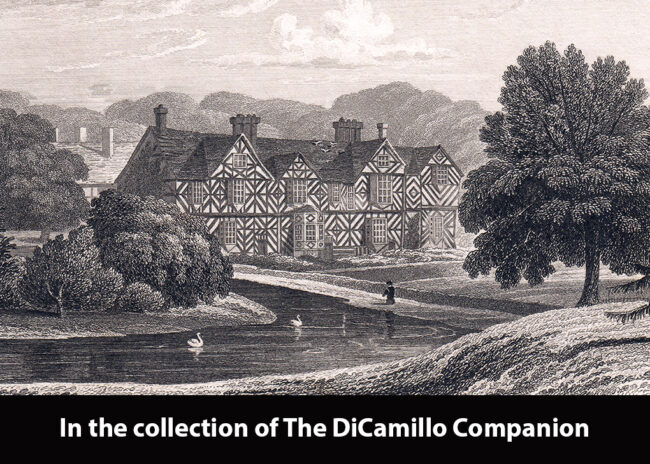
An 1825 engraving of the entrance facade from "Neale's Views of Seats"
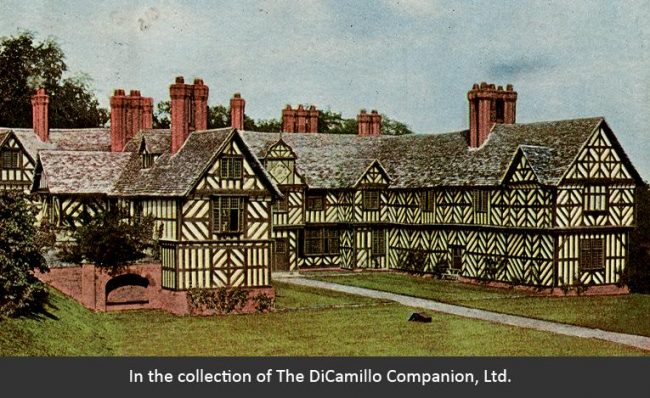
The garden facade from a 1905 postcard
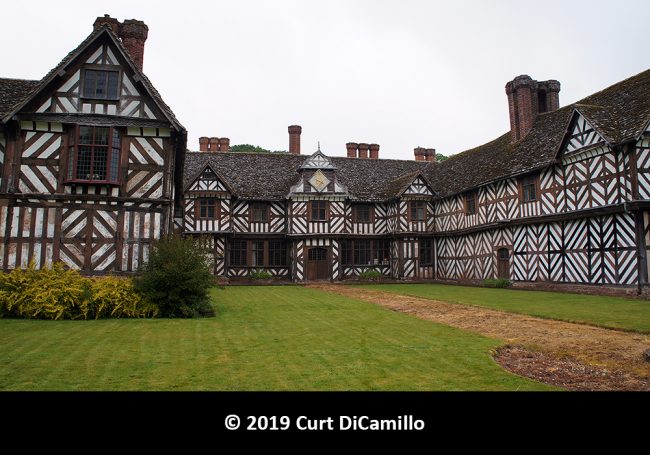
The garden facade in 2019
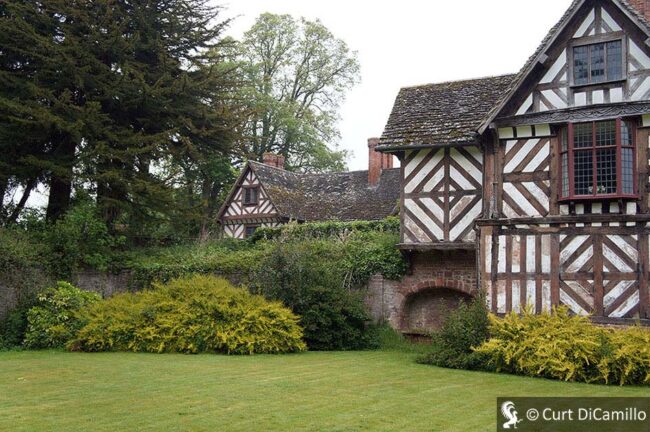
A wing of the garden facade
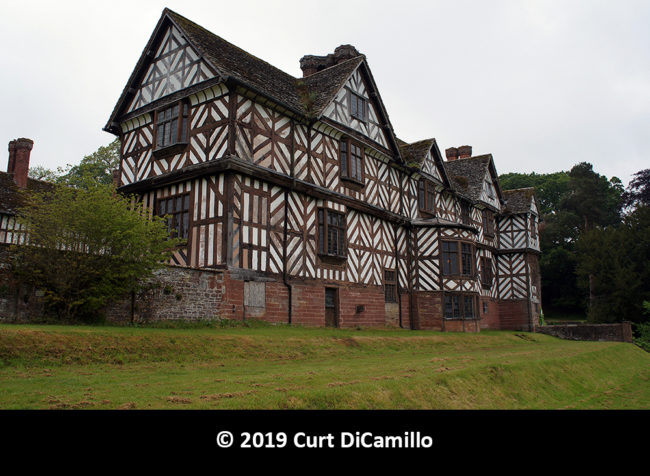
Side facade
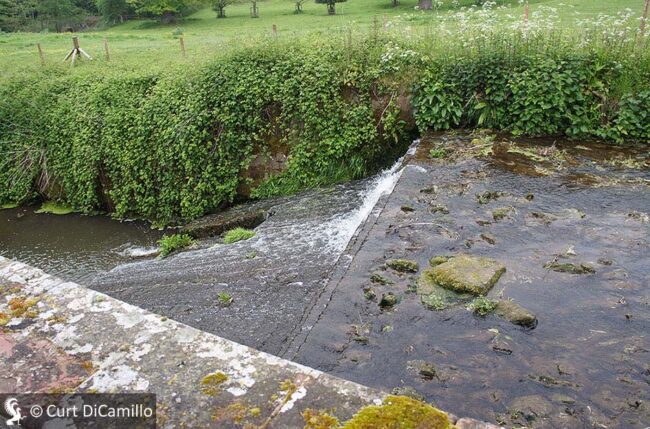
The Rowe Brook
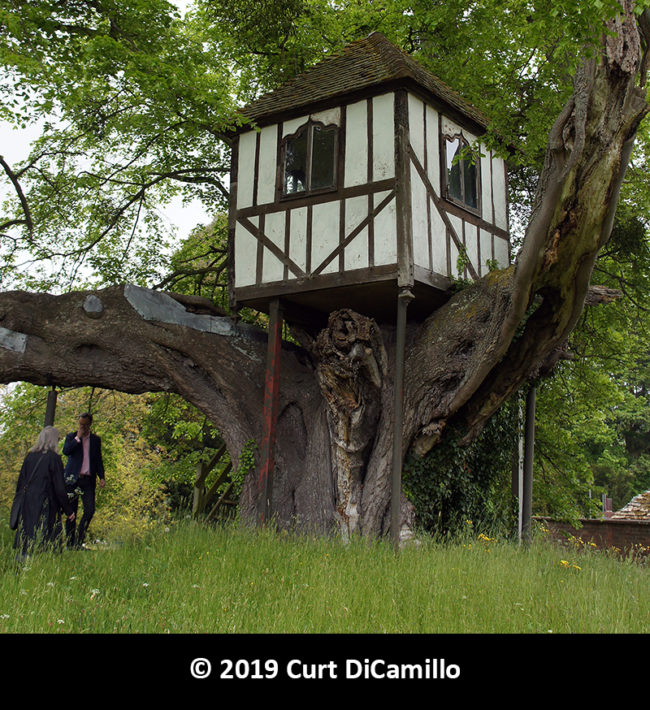
The tree house
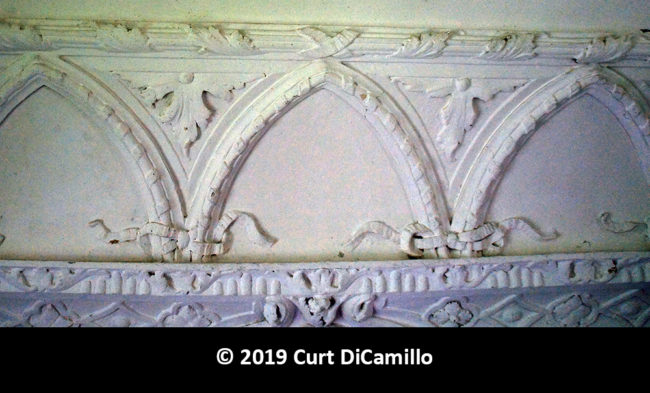
18th century plasterwork inside the tree house
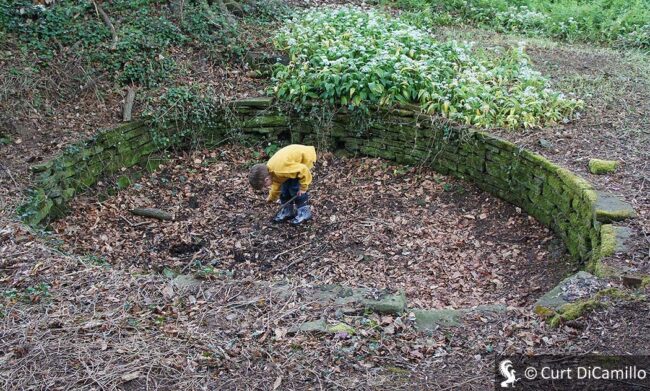
The pitch pit, from whence the house gets its name!
Built / Designed For: Adam Ottley
House & Family History: Pitchford is a dreamy half-timbered mansion set in a bowl of parkland close to the bitumen well and Rowe Brook that gives the place its name. Its charms continue to entrance visitors, although, until just a few years ago its future looked bleak. The house had been severed from its original family descendants, the Colthursts, as a result of a sale to satisfy debts that resulted from their having been Lloyd’s Names—guarantors of the insurance company that had to make record payouts following the great storm of 1987. Although, at that time, it had been hoped that the National Trust might acquire the house and its contents, the refusal of Environment Secretary David Mellor to permit use of National Heritage Memorial Fund resources led to the sale of the house and its contents. Over two days Christie’s sold heirlooms that had been in the house for centuries, after which the empty Pitchford was sold to an overseas buyer who, for 25 years, never lived in the building. Mercifully, the neglect, which had reached a critical point, was arrested when the Colthursts’ daughter and her husband, James Nason, were able to buy the house back; they are now working with their young children on restoring, refurbishing, repurposing, and bringing this delightful place back to life. Pitchford was built from the proceeds of the wool trade by the Ottley family, who purchased the property in 1473. First, in the 15th century, came the west wing, and then, in the mid-16th century, Adam Ottley engaged the Shrewsbury carpenter John Sandford to reinvent the house as a highly decorative E-plan mansion. His descendant in the early 17th century built a tree house in the boughs of a lime tree in the garden; now embellished with 18th century plasterwork, this remains as one of the world’s earliest tree houses. When the Ottleys died out, Pitchford passed to their cousins, the Jenkinsons, earls of Liverpool (the 3rd Earl entertained the young Princess Victoria and her mother, the Duchess of Kent, at Pitchford). Lord Liverpool’s daughter, Lady Louisa Cotes, and her son, Colonel Cotes, oversaw the sensitive Victorian restoration of the house under the aegis of the architect George Devey. Pitchford Hall, which nestles next to the parish church of St. Michael, has been rightly called “the queen of Shropshire’s black and white houses.” (We are most grateful to Gareth Williams for this history of Pitchford Hall.)
Collections: The contents of Pitchford Hall were sold at Christie's on September 28-29, 1992 for £1,348,297. The Pitchford Hall Cup, made in 1684 and today in the collection of the Victoria & Albert Museum, was once at Pitchford Hall. The cup is a small glass mug that was sold at the 1683-84 Frost Fair, one of the fairs that were held on the River Thames when the river froze solid.
Garden & Outbuildings: The 17th century tree house at Pitchford, perched in an ancient lime tree, is probably the oldest surviving tree house in the world. The Pitchford Estate today spans 1,000 acres.
Architect: George Devey
Date: 19th centuryJohn Bernard (J.B.) Burke, published under the title of A Visitation of the Seats and Arms of the Noblemen and Gentlemen of Great Britain and Ireland, among other titles: 2.S. Vol. I, p. 192, 1854.
John Preston (J.P.) Neale, published under the title of Views of the Seats of Noblemen and Gentlemen in England, Wales, Scotland, and Ireland, among other titles: 2.S. Vol. II, 1825.
Country Life: III, 294, 1898. XLI, 352, 376, 1917.
Title: Tudor House and Garden: Architecture and Landscape in the Sixteenth and Early Seventeenth Centuries, The
Author: Henderson, Paula
Year Published: 2005
Reference: pg. 153
Publisher: New Haven: Yale University Press
ISBN: 0300106874
Book Type: Hardback
Title: Country Life: 100 Favourite Houses
Author: Green, Candida Lycett
Year Published: 1999
Publisher: London: Boxtree
ISBN: 0752213334
Book Type: Hardback
Title: Disintegration of a Heritage: Country Houses and their Collections, 1979-1992, The
Author: Sayer, Michael
Year Published: 1993
Reference: pg. 38
Publisher: Norfolk: Michael Russell (Publishing)
ISBN: 0859551970
Book Type: Hardback
House Listed: Grade I
Park Listed: Grade II
Current Seat / Home of: Rowena Colthurst and James Nason; here since 2016.
Past Seat / Home of: Adam Ottley, 16th century; Ottley family here from 1473 until the 17th century. Charles Jenkinson, 3rd Earl of Liverpool, 19th century. Oliver Colthurst, 20th century. Cote family. Grant family, until 1992.
Current Ownership Type: Individual / Family Trust
Primary Current Ownership Use: Private Home
Ownership Details: Available for pre-booked tours, holiday lets, and weddings.
House Open to Public: By Appointment
Website: https://www.pitchfordestate.com
Historic Houses Member: No